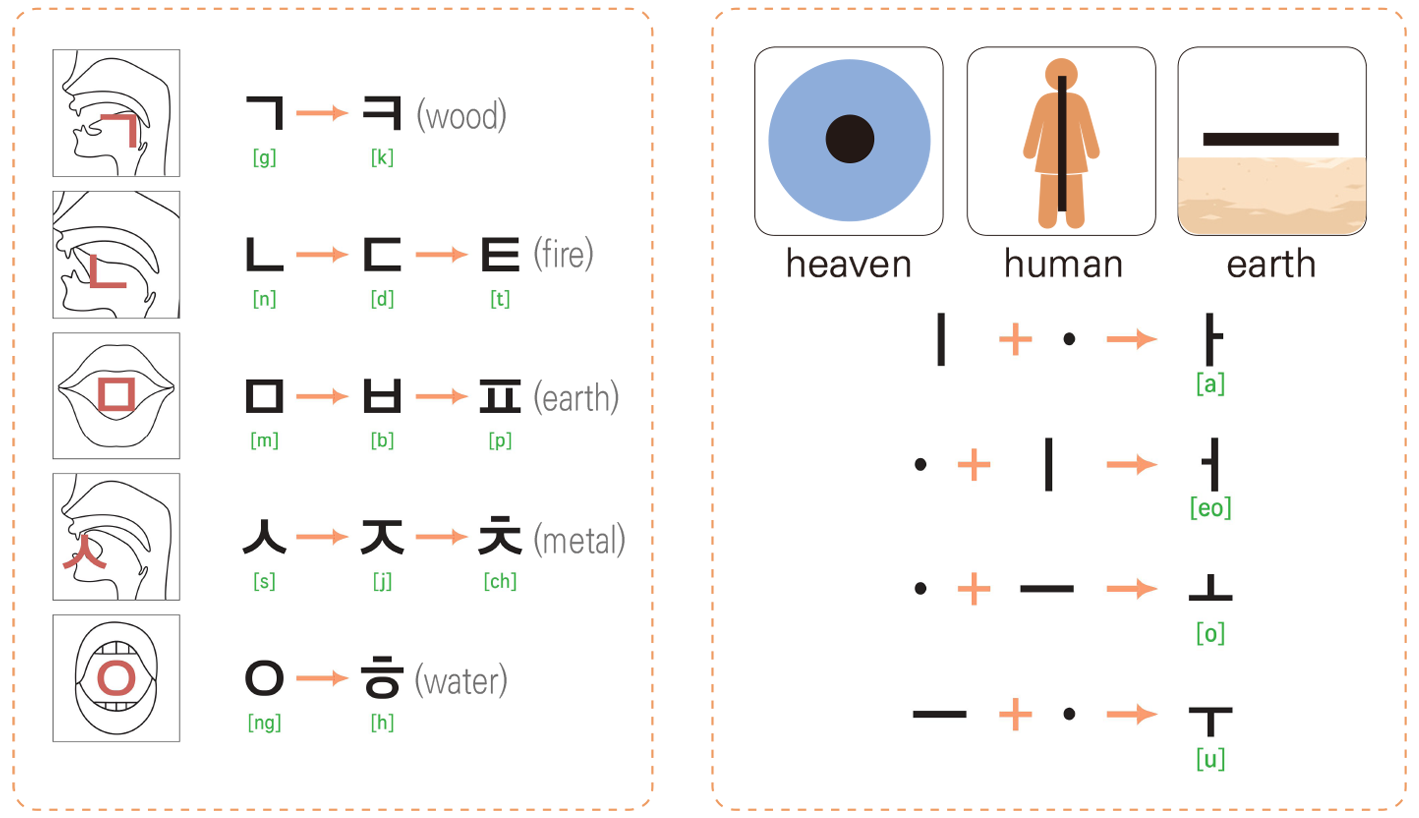Hangul (“Great Script”) has been lauded by prominent linguists for being ‘scientific’ and easy to learn.
The alphabet was devised in 1443 during the reign of King Sejong the Great (1397–1450). Hangul consists of 14 basic consonants and 10 basic vowels. The basic components of the vowels ( • ㅣ ㅡ ) represent heaven, earth, and humanity. The 5 basic consonants (ㄱ,ㄴ,ㅁ,ㅅ,ㅇ) correspond to the places of articulation inside the mouth, as well as to the five elements in Eastern philosophy: wood, fire, earth, metal, and water.
British historian and travel writer John Man wrote in his book Alpha Beta: How Our Alphabet Shaped the Modern World:
In its simplicity, efficiency, and elegance, [Hangul] is alphabet’s epitome, a star among alphabets, a national treasure for Koreans, and “one of the great intellectual achievements of humankind”, in the judgment of the British linguist, Geoffrey Sampson.
Recognized for its excellence and ease of learning, Hangul is now taught in 1,670 elementary and secondary schools in 39 countries.

